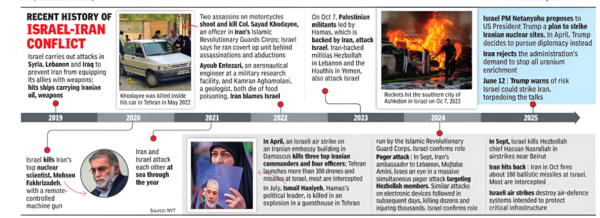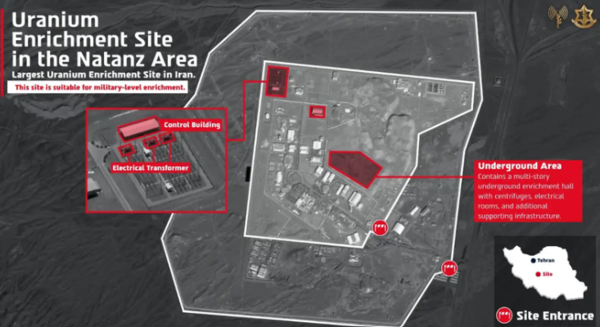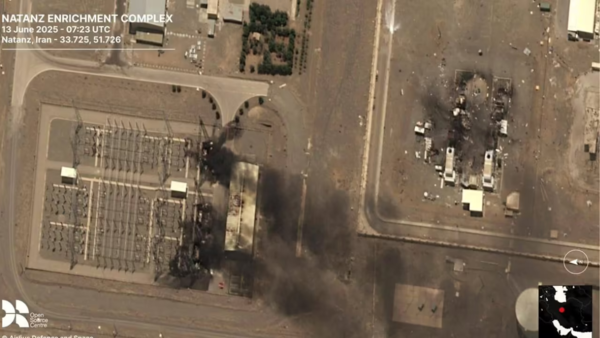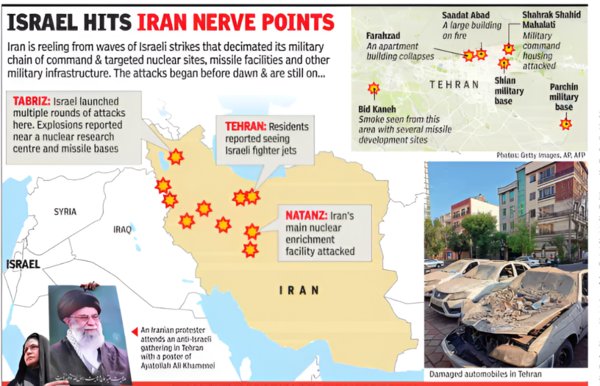Israel launched its “greatest military operations in story” against Iran on Friday, launching attacks on military installations and concentration camps. In the Khamenei-led Islamic Republic, major military leaders and scientists were killed as a result of Israel’s “preemptive strikes”. Israeli Prime Minister Benjamin Netanyahu described it as a” threat at the heart of Iran’s nuclear weaponization program.” The action sparked worldwide problem, especially given that the United States and its brains community continue to assert that Iran’s nuclear program is not now intended to produce weapons, according to CNN.

But, that didn’t quit Israel from retaliating against what it says are becoming a serious threat to the Middle East. Iran has consistently argued that its nuclear activities are only used for peaceful purposes, with particular emphasis on generating energy and boosting its economy. However, the suspicion that Iran is restricting foreign inspections and enriching uranium has grown even more high. Iran may be positioned to be just a step ahead from developing a weapon, according to critics.
The Iranian atomic program’s origins
Iran’s nuclear program genuinely began in 1957 with American assistance, when the two nations became friends and the Shah was in power. The main topic at the time was relaxing energy usage. However, all changed following the Islamic Revolution of 1979, which saw the transition of the monarchy to a autocratic regime. Uncle Sam withdrew its backing, and since then, conflicts have grown in relation to Iran’s nuclear interests. Iran has ratified the UN’s Nuclear Non-Proliferation Treaty ( NPT ), under which it has pledged to stop developing nuclear weapons. Fears have nonetheless persisted for years. The important issue is Iran’s uranium enrichment, which Iran claims it needs for strength but which also brings it much closer to having nuclear weapons.
Why is uranium enhancement important, and what does it mean?
The process of uranium enrichment increases the intensity of uranium-235, the portion of uranium that can be used for nuclear power or weaponry. Obviously, the majority of uranium is composed of uranium-238, which is neither helpful nor necessary. Only a small percentage, or 0.7 %, contains uranium-235, and that quantity needs to be increased to make it more useful. Uranium is first transformed into oil before being spun in centrifuges at high speeds for enrichment. There are many of these centrifuges in Iran, some of which are very advanced. The uranium may become enriched more quickly the more advanced the spin. Uranium is typically enriched for around 3-5 % for civilian use in nuclear power plants. It must have a 90 % or higher for a nuclear weapon.

Iran has now increased the beauty of uranium to 60 %. That’s no still bomb-grade, but it’s dangerously near. Iran has a stockpiled more than 400 kilograms of uranium that has been enriched to the highest level, according to a report from the UN’s nuclear watchdog, the International Atomic Energy Agency ( IAEA ). That’s much to make up to nine weapons, say atomic experts, if more enriched.
From politics to impasse
The international discussion has much focused on Iran’s uranium enrichment. Iran and six major world powers, including the US, reached a bargain in 2015 to limit its nuclear programme. It was also relieved of worldwide sanctions. Iran agreed to cap enrichment at 3.67 %, reduce its stockpile, and restrict the number of centrifuges it used as part of the agreement. However, US President Donald Trump withdrew the country from the offer and reinstituted restrictions, citing shortcomings. Iran broke the terms of the agreement, using more sophisticated centrifuges, increasing beauty, and enriching more plutonium. Additionally, it removed Eu security devices from significant locations. In 2022, the Biden administration’s efforts to resurrect the bargain failed. At an Egyptian facility, investigators discovered allergens that were dangerously close to the 90%-percentage mark in 2023. And in recent months, US knowledge has determined that Iran’s “breakout time,” which is the amount of time needed to produce sufficient weapons-grade materials for a bomb, has decreased.
Where does Israel’s attack fit into the wider issue?
What it considers to be crucial components of Iran’s nuclear program was targeted by Israel’s activity. One of the most significant strikes occurred at the Natanz service, which is a major hub for uranium enrichment.

Natanz, which is located 250 kilometers west of Tehran, is thought to be the center for the creation and assembly of centrifuges. Following the Jewish attack, satellite images and videos showed hearth and death in the area.

According to the IAEA, Bushehr, Fordow, and Isfahan, three another significant atomic sites, were unaffected. But, Iranian media reported that six nuclear scientists had been killed, which would be a significant blow to the individual investment responsible for Iran’s nuclear development. Iran has much anticipated the possibility of military attacks on its nuclear sites. Some facilities are hidden deep underground or completely destroyed by force majeure. According to military analysts, Israel does have hampered Iran’s progress, but it’s still possible not to have put an end to the nuclear threat.
Non-proliferation responsibility violated
The IAEA has since taken a more ferme position than in the past. It passed a resolution claiming Iran is breaking its non-proliferation duty for the first time in nearly 20 years. Iran has also pledged to increase its atomic activity in response. The Zionist military released a declassified analysis in a public speech that claimed Iran is extremely close to building a weapon in a social media post. Iran has decentralized its enhancement activities, kept its centrifuges hidden in underwater locations, and is still producing enriched uranium quickly.
The Israeli Defense Forces claim that the universe has tried politics, but Israel now believes it has no option but to engage in self-defense.




